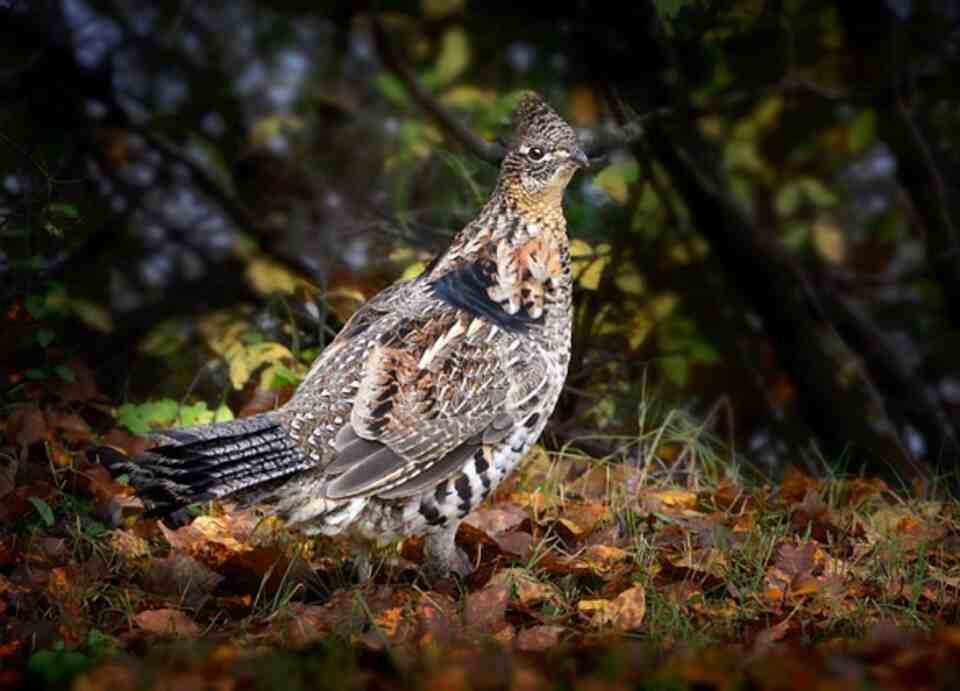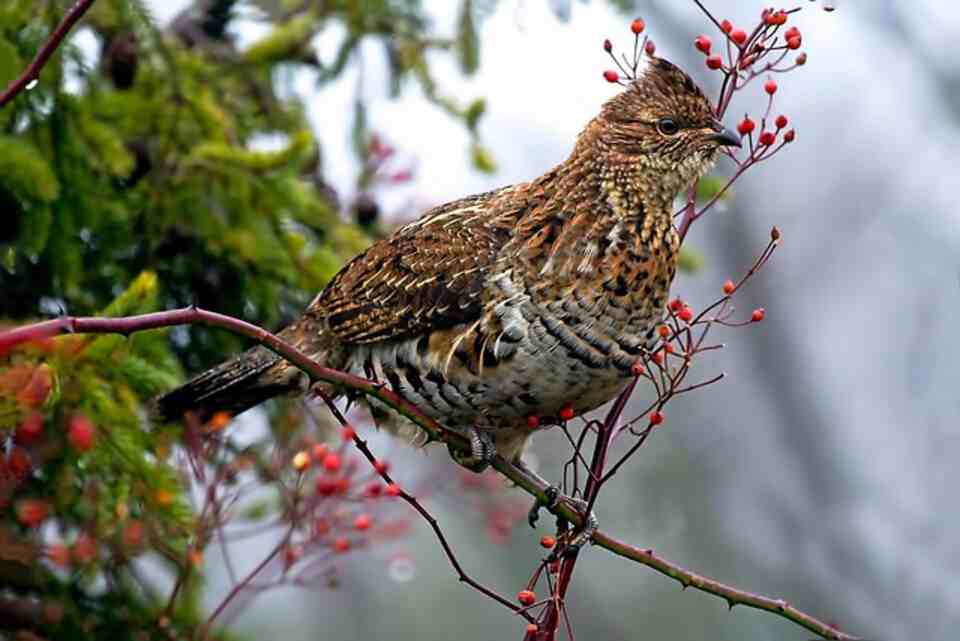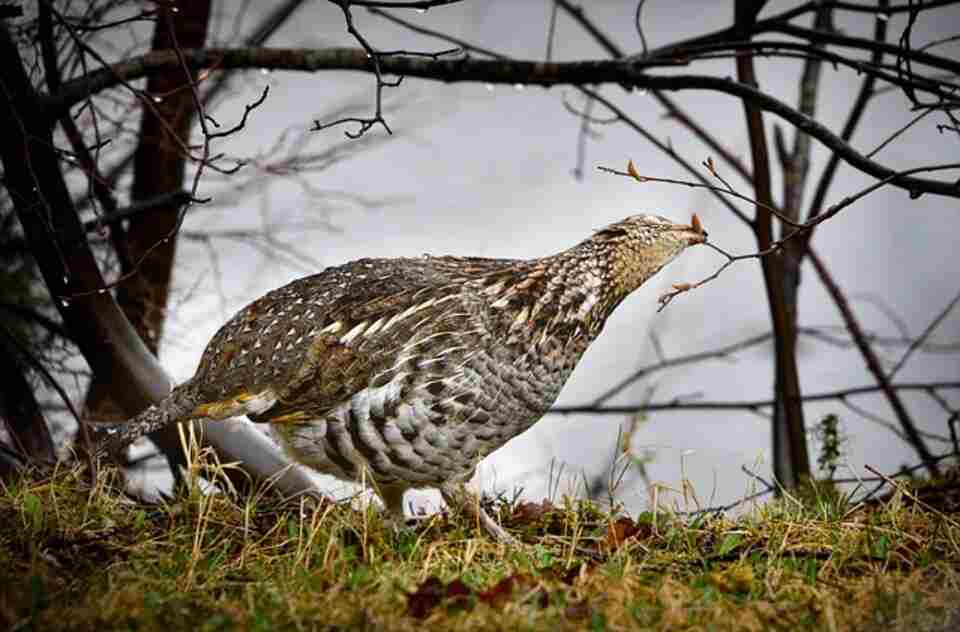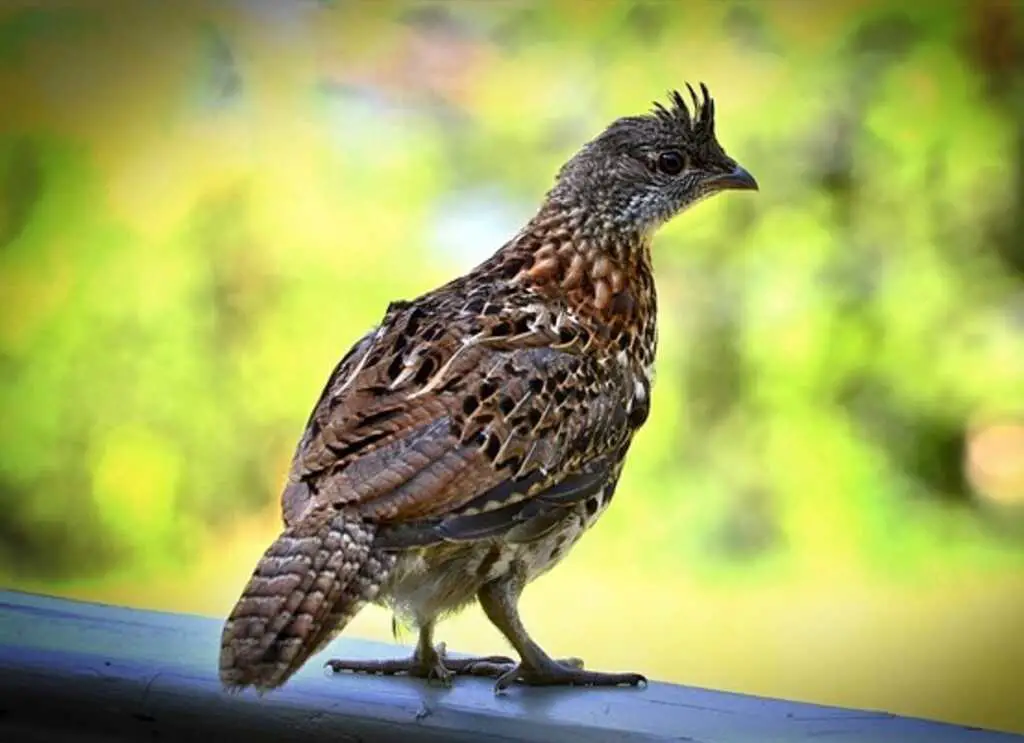The Ruffed Grouse holds a significant place in the hearts of Pennsylvanians as it was designated as the official state bird in 1931. This decision was not arbitrary; rather, it was based on the bird’s unique characteristics, ecological significance, and cultural importance in the state. Let’s dive into the importance of the Ruffed Grouse as the Pennsylvania State Bird.
Table of Contents
The Selection Process of the Ruffed Grouse
Selection as the Pennsylvania State Bird
The ruffed grouse was officially designated as the state bird of Pennsylvania on June 22, 1931. However, the process of selecting the ruffed grouse as the state bird began much earlier.
In the late 1920s, the Pennsylvania Game Commission initiated a statewide campaign to select a state bird. The ruffed grouse, also known as the “drummer” or “king of the gamebirds,” was a popular choice among hunters and conservationists due to its iconic status as a challenging game bird and its importance to Pennsylvania’s natural heritage.
After receiving numerous nominations and recommendations from various organizations and individuals, the Game Commission chose the ruffed grouse. In 1931, the ruffed grouse was officially adopted as the state bird of Pennsylvania through a resolution passed by the Pennsylvania General Assembly.
The selection of the ruffed grouse as the state bird was a recognition of its cultural and ecological significance in Pennsylvania. The ruffed grouse has been a revered game bird in the state since the early days of European settlement, and its pursuit has been the subject of some of America’s earliest hunting literature.
Additionally, the ruffed grouse is a symbol of Pennsylvania’s rich forested landscapes and the importance of conserving and managing these habitats for wildlife.
The Ruffed Grouse’s Significance
The ruffed grouse’s selection as the state bird was not merely a symbolic gesture; it also highlighted the importance of habitat conservation and responsible hunting practices. The bird’s presence in Pennsylvania’s forests serves as an indicator of a healthy ecosystem, and its popularity among hunters underscores the state’s long-standing tradition of sustainable game management.
Today, the ruffed grouse remains a beloved and iconic species in Pennsylvania, celebrated by birdwatchers, hunters, and nature enthusiasts alike. Its designation as the state bird serves as a reminder of the state’s commitment to preserving its natural heritage and ensuring that future generations can continue to appreciate the beauty and diversity of Pennsylvania’s wildlife.

Importance of the Ruffed Grouse
The Ruffed Grouse: An Iconic Symbol of Pennsylvania
The Ruffed Grouse, scientifically known as “Bonasa umbellus,” is a medium-sized bird native to North America. It is renowned for its stunning appearance, which includes mottled brown plumage, a dark band on its tail, and a prominent ruff of feathers around its neck. This distinctive appearance has made the Ruffed Grouse a beloved symbol of Pennsylvania’s rich natural heritage.
Ecological Significance of the Ruffed Grouse
Beyond its symbolic value, the Ruffed Grouse plays a crucial role in Pennsylvania’s ecosystem. As a primarily forest-dwelling bird, the Ruffed Grouse depends on healthy forests for its survival. By selecting young forests for nesting and mature forests for feeding and cover, the Ruffed Grouse acts as an indicator species for forest health. Its presence signals a well-balanced and diverse forest ecosystem, making it an essential species for conservation efforts in Pennsylvania.
Cultural Importance and Traditions
The Ruffed Grouse holds a special place in Pennsylvania’s culture and traditions. For many residents, the start of the hunting season for Ruffed Grouse is a highly anticipated event that brings communities together and fosters a deep connection to the land. The bird’s elusive nature, distinctive drumming displays, and spirited flights have inspired generations of hunters and outdoor enthusiasts in Pennsylvania.
Conservation Efforts and Challenges
While the Ruffed Grouse is a revered symbol in Pennsylvania, it faces numerous challenges that threaten its population. Habitat loss due to urbanization, deforestation, and climate change poses significant risks to the bird’s survival. Conservation organizations and wildlife agencies in Pennsylvania are actively working to protect and restore Ruffed Grouse habitats through initiatives such as forest management practices, land preservation efforts, and educational programs.
The Future of the Ruffed Grouse in Pennsylvania
As the Pennsylvania State Bird, the Ruffed Grouse serves as a reminder of the state’s commitment to preserving its natural heritage for future generations. By raising awareness about the bird’s ecological importance and promoting sustainable conservation practices, Pennsylvanians can ensure that the Ruffed Grouse continues to thrive in the state’s forests. Through collaborative efforts and responsible stewardship, the iconic Ruffed Grouse will remain a cherished symbol of Pennsylvania’s biodiversity and natural beauty.

Habitat and Characteristics of the Ruffed Grouse
The Ruffed Grouse, Pennsylvania’s state bird, is a fascinating and iconic bird species found in various habitats throughout the state. Understanding the habitat and characteristics of the Ruffed Grouse is essential for conservation efforts and appreciating the unique qualities of this bird.
Habitat of the Ruffed Grouse
The Ruffed Grouse is commonly found in young, deciduous forests across Pennsylvania. These birds thrive in areas with dense undergrowth, providing them with cover and food sources. They have a preference for habitats with a mixture of trees such as aspen, birch, cherry, and oak, offering both shelter and food. Ruffed Grouse are ground-dwelling birds that utilize the forest floor for foraging and nesting. Their habitats typically include areas with a combination of trees, shrubs, and open spaces, allowing them to feed on a variety of plants, fruits, and insects.
Characteristics of the Ruffed Grouse
The Ruffed Grouse is known for its unique characteristics that make it a distinctive bird species. These birds have mottled brown plumage that provides excellent camouflage in their forest habitats, helping them evade predators. One of the most striking features of the Ruffed Grouse is the collar of dark feathers around their neck, which resembles a ruff or a “lion’s mane,” giving them their name.
| Ruffed Grouse Attribute | Measurement |
|---|---|
| Length | 16-19 inches (41-48 cm) |
| Weight | 1-1.5 pounds (450-680 grams) |
| Wingspan | 19-25 inches (48-64 cm) |
Ruffed Grouse are well-adapted for life on the forest floor, with short, rounded wings that enable quick takeoffs and agile flight patterns. Their tails are broad and fan-shaped, aiding in maneuverability during flight and courtship displays. Male Ruffed Grouse are known for their iconic drumming display during the breeding season, where they beat their wings rapidly to create a distinctive sound that attracts females and establishes territory.
Conservation of the Ruffed Grouse
Conservation efforts are crucial to protecting the habitats and populations of Ruffed Grouse in Pennsylvania. Habitat loss due to logging, development, and changes in land use practices poses a significant threat to these birds. Maintaining healthy forests with diverse tree species and understory vegetation is essential for supporting Ruffed Grouse populations.
To support Ruffed Grouse conservation, land management practices such as sustainable forestry, controlled burns, and habitat restoration projects are implemented to create ideal habitat conditions for these birds. Conservation organizations and wildlife agencies work together to monitor Ruffed Grouse populations, study their habitats, and raise awareness about the importance of preserving these iconic birds for future generations.
The Ruffed Grouse is a beloved symbol of Pennsylvania’s rich wildlife heritage, embodying the beauty and resilience of forest ecosystems. By understanding the habitat and characteristics of the Ruffed Grouse, we can appreciate the importance of conserving their habitats and ensuring the long-term survival of this iconic bird species. Through collaborative conservation efforts and public awareness, we can protect the Ruffed Grouse and the diverse ecosystems they depend on for generations to come.

Conclusion
In the grand tapestry of Pennsylvania’s rich biodiversity, the Ruffed Grouse stands as a symbol of resilience and natural beauty. As the distinguished State Bird, it represents the spirit of the wilderness that has long defined this state’s identity. Its significance goes beyond mere symbolism; it reminds us of the importance of conservation efforts to preserve not just a species, but a way of life deeply intertwined with nature.
The Ruffed Grouse thrives in the dense woodlands and secluded forests that Pennsylvania proudly boasts. Its habitat tells a tale of thriving ecosystems and the delicate balance of nature. By protecting these environments, we not only safeguard the future of the Ruffed Grouse but also ensure the survival of countless other species that call these forests home. Understanding the characteristics that make the Ruffed Grouse unique offers us a glimpse into the intricate web of life in which we all play a part.
With its mottled plumage and tail feathers adorned with a distinctive ruff, the Ruffed Grouse is a master of camouflage, blending seamlessly into its surroundings. Its drumming display during mating season echoes through the woods, a testament to nature’s beauty and resilience. The Ruffed Grouse’s diet of fruits, insects, and seeds highlights its role as a vital link in the ecosystem, dispersing seeds and controlling insect populations.
As we delve into the realm of the Ruffed Grouse, we uncover a world of wonder and interconnectedness. Its habitat and characteristics paint a vivid picture of a species intricately woven into the fabric of Pennsylvania’s natural heritage. By delving deeper into the importance of the Ruffed Grouse as the Pennsylvania State Bird, we gain a newfound appreciation for the wonders of the wild and the need to protect and preserve them for generations to come.
The Ruffed Grouse serves as a reminder of our responsibility as stewards of the land, entrusted with the task of preserving the diverse tapestry of life that surrounds us. By understanding the habitat and characteristics of the Ruffed Grouse, we not only enrich our knowledge of this majestic bird but also deepen our connection to the natural world. Let us take inspiration from the Ruffed Grouse’s tenacity and grace as we strive to create a future where both nature and humanity can flourish in harmony.
In embracing the Ruffed Grouse as the Pennsylvania State Bird, we honor not just a symbol, but a living embodiment of the wilderness that lies at the heart of our shared heritage. Let us commit to protecting and nurturing the habitats that sustain the Ruffed Grouse and myriad other species, ensuring that future generations can experience the beauty and wonder of Pennsylvania’s natural landscapes.
The Ruffed Grouse, with its vibrant plumage and resounding drumming, invites us to appreciate the untamed beauty of the wild and to cherish the intricate ecosystems that sustain us all.
Citations:
[1] https://www.pgc.pa.gov/Wildlife/WildlifeSpecies/Documents/Ruffed%20Grouse%20Management%20Plan%202011-2020.pdf
[2] https://projectupland.com/grouse-species/ruffed-grouse-hunting/how-to-choose-shot-sizes-choke-size-ruffed-grouse-hunting/
[3] https://www.fs.usda.gov/Internet/FSE_DOCUMENTS/stelprdb5182048.pdf
[4] https://www.pgc.pa.gov/Wildlife/HabitatManagement/Documents/GrouseManagementBMPs%20lr%20d.pdf
[5] https://carnegiemnh.org/ruffed-grouse-or-scarlet-tanager-debating-the-pennsylvania-state-bird/


